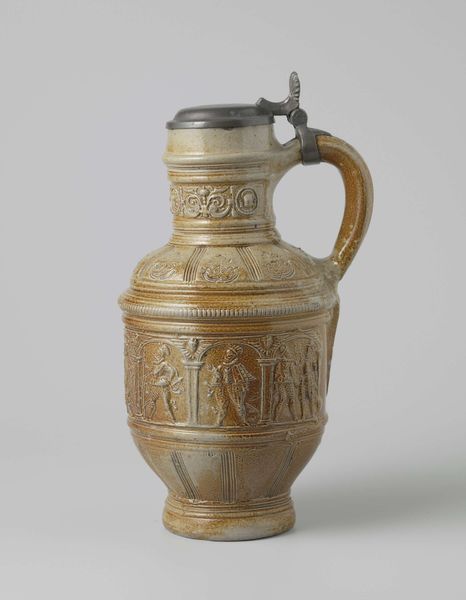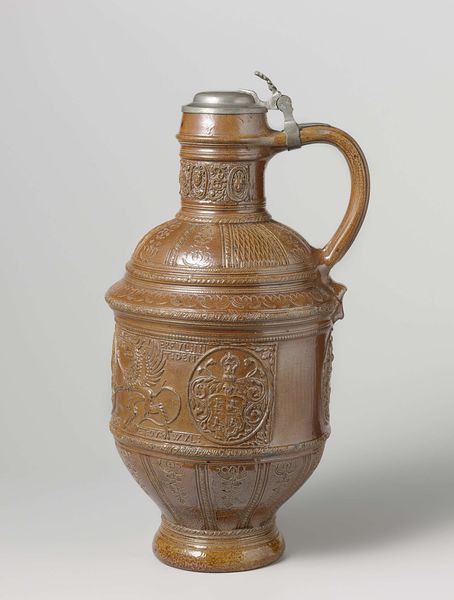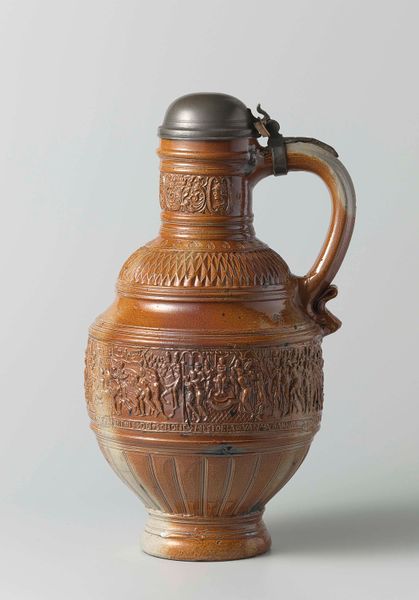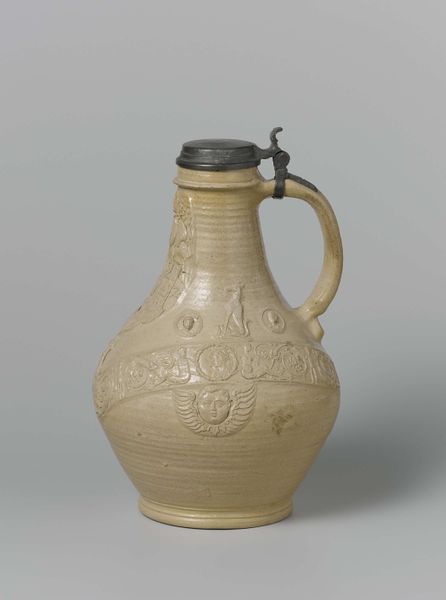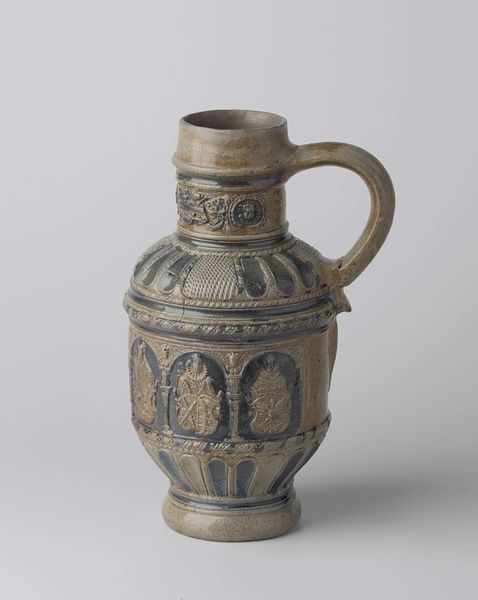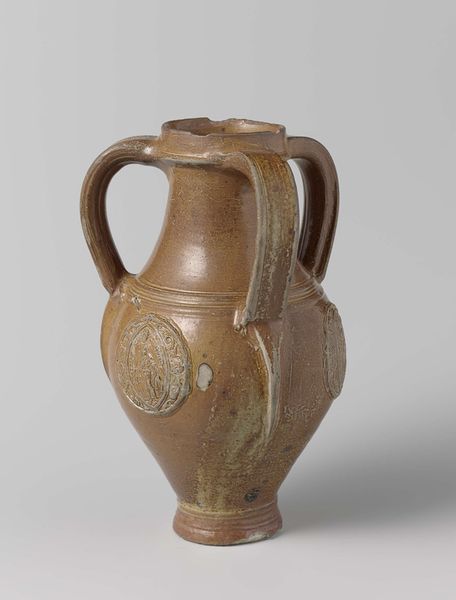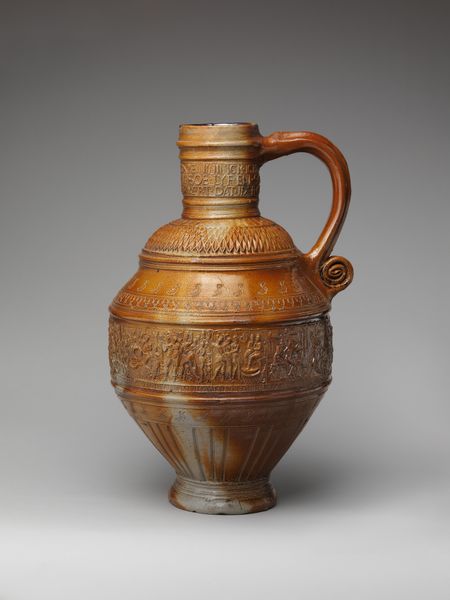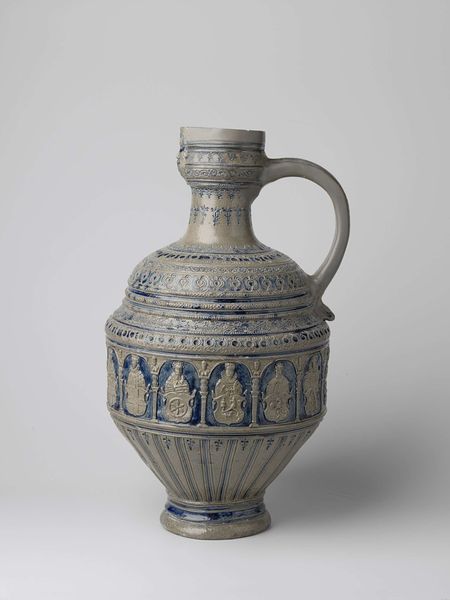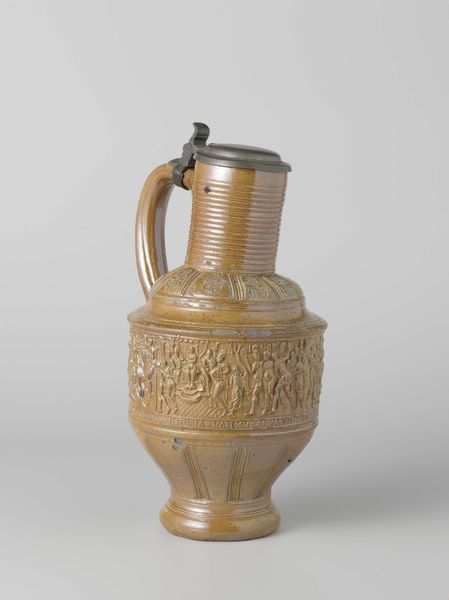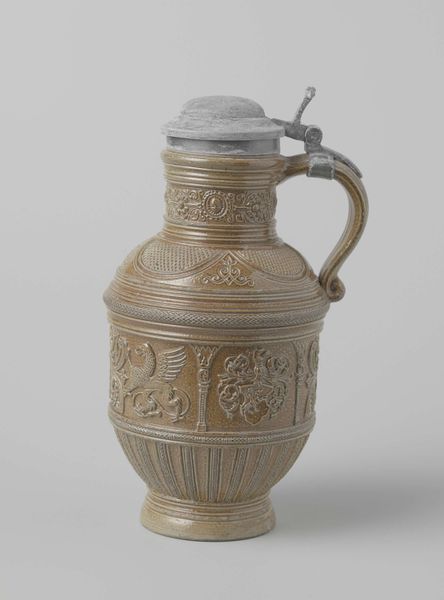
ceramic
#
pottery
#
ceramic
#
11_renaissance
#
stoneware
#
ceramic
#
genre-painting
Copyright: Rijks Museum: Open Domain
Curator: I'm immediately drawn to its sturdy form, the smooth, brown-glazed ceramic, and the tactile presence of something meant for use, yet elevated by its artistry. Editor: Absolutely! Let's delve into this captivating stoneware jug, crafted in 1586 by Emonds Mennicken. It features an intriguing portrayal of the Four Evangelists. Curator: Ah, yes, I can see them now. Carved depictions, each figure bearing his identifying symbol—the angel for Matthew, Mark's lion, Luke's ox, and John's eagle. Editor: Precisely. Their presence transformed a utilitarian object into a vessel steeped in religious significance, reflecting the deeply interwoven nature of faith and daily life in the late Renaissance. Consider where this jug might have been displayed, the kind of person or household that would have commissioned or purchased such a piece. Curator: The fact that such sacred imagery appears on something as mundane as a jug tells me about the permeable boundaries between the sacred and the profane, and that this sort of artwork normalizes the culture memory of its people. Perhaps these weren't separate spheres at all but part of a continuum of experience. It feels...personal. Editor: And that contrasts strikingly with how religion often projects power through awe-inspiring displays of monumental architecture. This stoneware jug shrinks the divine to domestic proportions. In that period the Holy Roman Empire sought to unify its states in the face of Reformation. Curator: You're right, these domestic vessels became instruments of personal piety. Imagine the stories told, the lessons passed down over a jug filled with beer! The object itself becomes a symbol— a conduit for religious and communal memory. Editor: Well, on the one hand this makes religious teachings intimate but one the other hand the personal nature of these items does provide fodder for popular culture and eventually for political disruption when society began to feel that authorities have too much power. Curator: Perhaps the image would remind us to imbibe carefully. Drink responsibly. After all the evangelists are watching us. Editor: The Four Evangelists watching over your shoulder while you drink your beer. Not an image you see every day! It brings this era so vividly to life and shows us a unique intersection of artistry and the everyday experience. Curator: I couldn’t agree more. A single piece that tells countless stories, linking past and present with enduring symbols.
Comments
rijksmuseum about 2 years ago
⋮
This jug is an example of the new stoneware forms that arose in Raeren during the second half of the 16th century. The body of this jug is less globular and more cylindrical in shape. Incised lines decorate the lower body and shoulders. The relief with the Four Evangelists on the belly of the jug is based on contemporary prints.
Join the conversation
Join millions of artists and users on Artera today and experience the ultimate creative platform.
